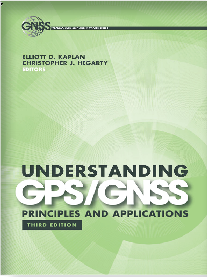Principles and Applications
Elliott D. Kaplan and Christopher J. Hegarty – Editors

Time plays a critical role in the protection, automation and control of electric power systems. Precise time synchronization between devices in substations all over the world requires a time source that can reach any location and provide reliable and accurate time information. That is why it is important for PAC specialists to get a better understanding of the sources of distributed time information.
This book is the third addition of a book that was published for the first time in 1996, a time when there were only two fully operational Global Navigation Satellite Systems (GNSS) – the US Global Positioning System (GPS) and the Russian GLONASS. Today there are two more – the Chinese BeiDou and the European Galileo. A regional system – Navigation with Indian Constellation (NavIC) – is fully deployed and a Japanese one under development.
The material in the book is arranged in fourteen chapters and three appendixes.
The first chapter is a brief introduction and overview of the material covered in the book. It introduces SATNAV (satellite navigation) and GNSS as a collection of all SATNAV systems. They are identified as sources of accurate, continuous worldwide, three-dimensional position and velocity information for users with adequate receivers. They are also disseminating accurate time using the Coordinated Universal Time (UTC) time scale.
Chapter 2 describes the fundamentals of user PVT (position, velocity, time) determination – how three-dimensional position, velocity and UTC time are obtained from a SATNAV system. It also presents the signals commonly used.
Chapters 3 through 6 describe in detail the four main SATNAV systems – GPS, GLONASS, Galileo and BeiDou. Each of these chapters includes some historical information, program overview and detailed system architecture and performance information.
Chapter 7 is dedicated to regional navigation systems, such as the NavIC and the emerging Japanese QZSS.
Once the different SATNAV systems have been described, Chapter 8 concentrates on the design and functionality of GNSS receivers, as well as how they search, acquire and track the signals.
One of the concerns with communications-based systems is the disruptions of the radio signals used. This is the focus of Chapter 9, which describes four general classes of radio frequency disruptions –unintentional or intentional interference, ionospheric scintillation, signal blockage and multipath.
This is followed by a discussion of GNSS measurement errors in Chapter 10.
The performance of standalone GNSS is covered in Chapter 11. It describes algorithms for estimating PVT using one or more GSNN constellations.
Chapter 12 introduces the concepts of differential GNSS (DGNSS) and Precise Point Positioning (PPP).
The requirements for continuous navigation between the update periods of the GNSS receiver in cases of signal shading or interreference are discussed in Chapter 13, together with methods for integrating signals from other sensors with the GNSS.
The final chapter of the book is dedicated to GNSS markets and applications, including the differences between the civil and military markets.
The thousand pages of the book are a rich source of information that I believe will be useful for all PAC specialists who would like to expand their knowledge and understanding of SATNAV systems.
Understanding GPS/GNSS
Principles and Applications
Elliott D. Kaplan and Christopher J. Hegarty – Editors
Publisher: Artech House
Publication Date: 2017-05-31
ISBN-10: 1630810584
ISBN-13: 9781630810580








